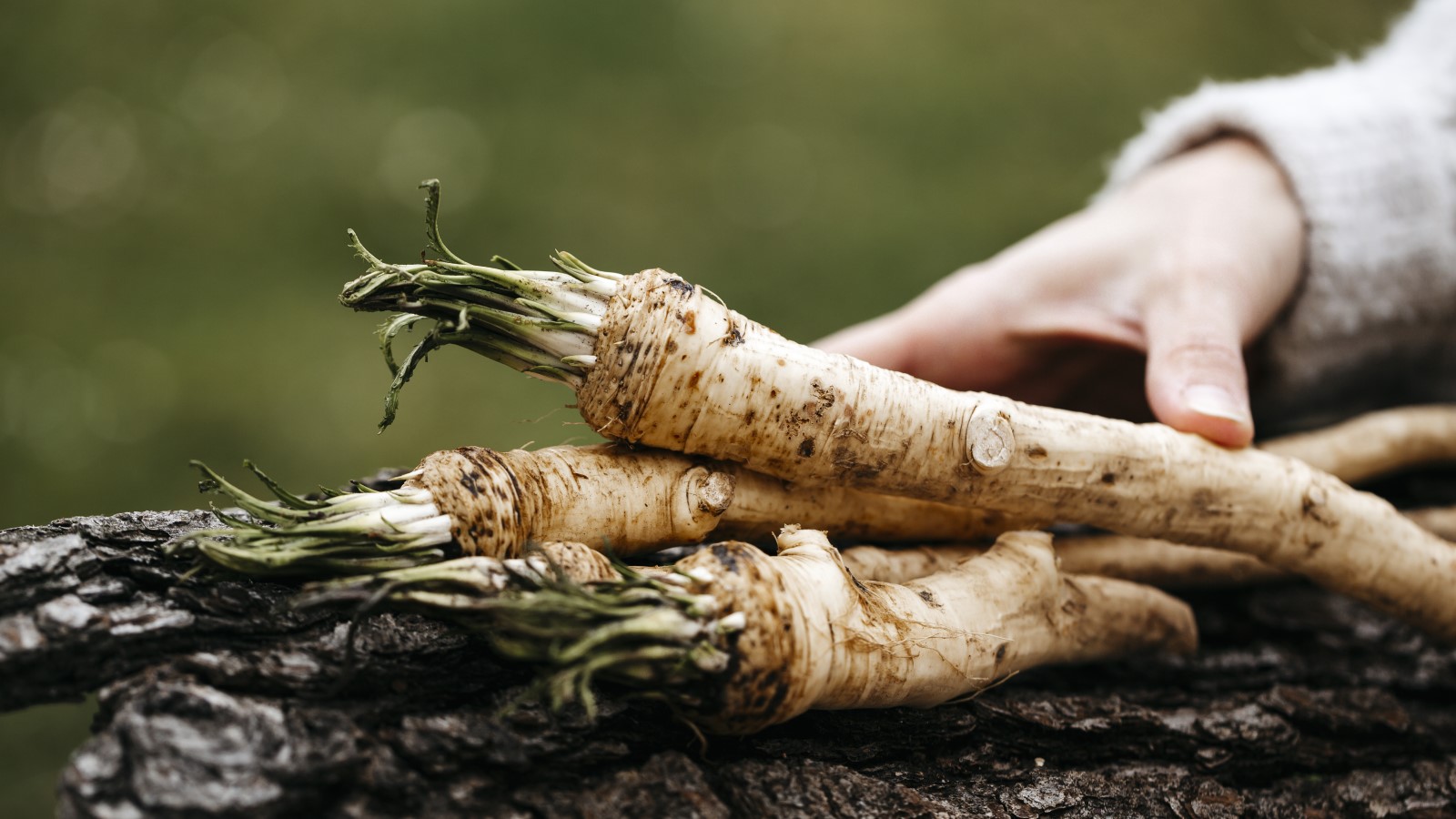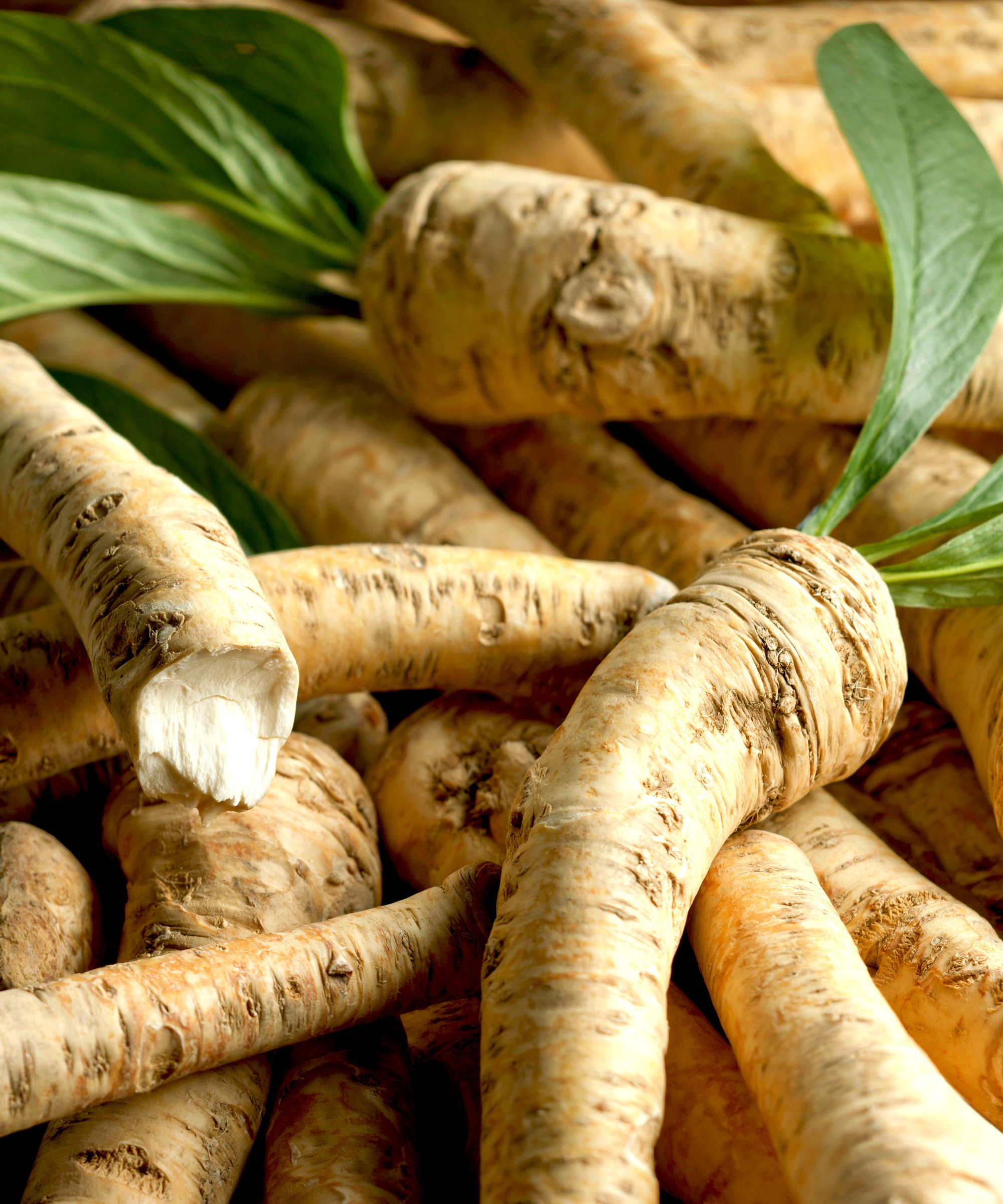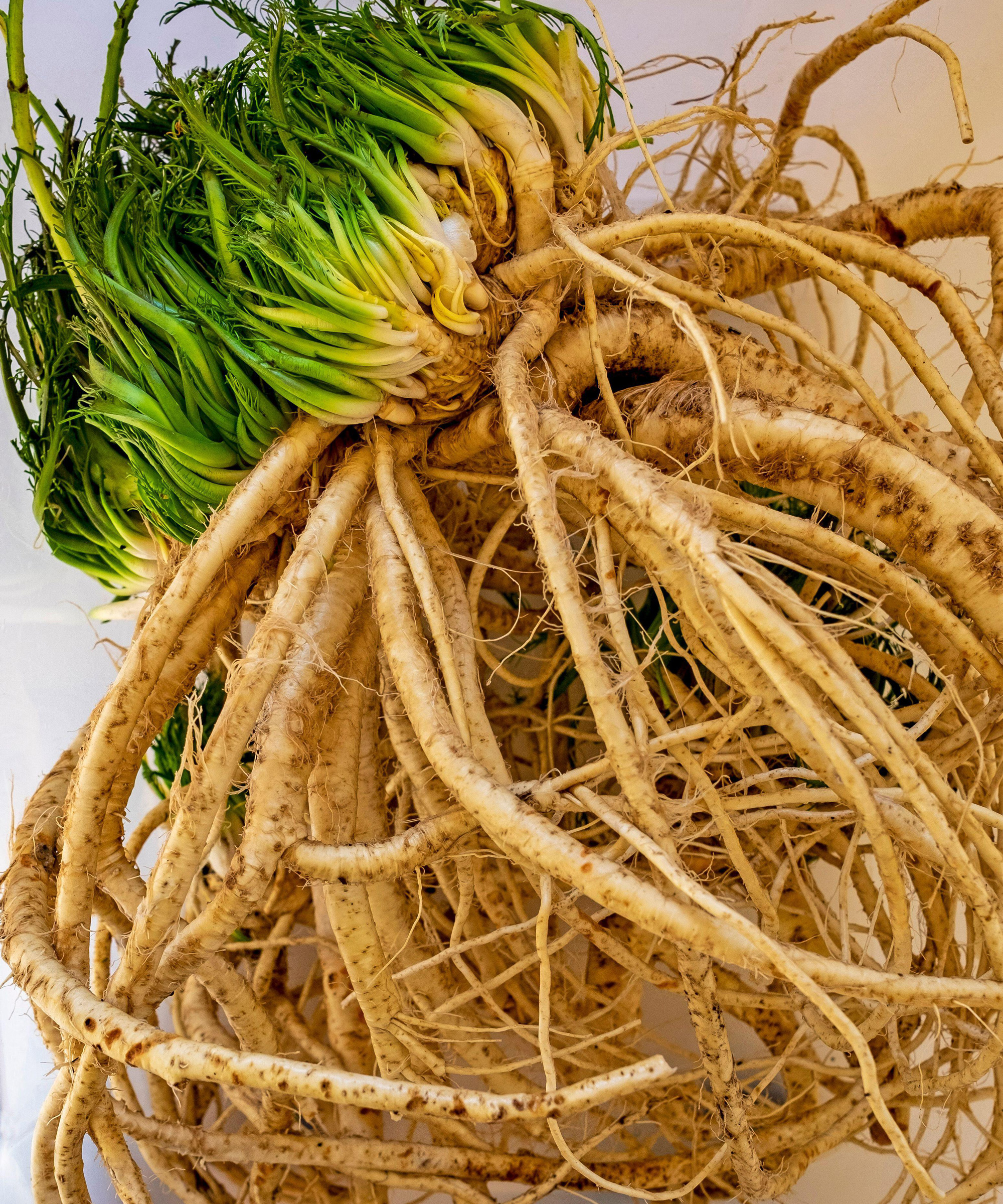How to harvest horseradish – my top tips learned from growing and picking the crop for chefs
Know the right time the pick horseradish and how to lift the plant without damaging the precious roots


Horseradish is famed for its spicy roots that are commonly used for sauces. It is also packed with vitamins and minerals and has medicinal uses. The plant has been cultivated for thousands of years, thanks to its wide variety of uses and how simple it is to grow.
I have grown horseradish in kitchen gardens that was harvested and used by chefs. If you want to know how to grow horseradish, the good news is that it's relatively simple to grow and harvest, providing you have the restraint required for its long growing season.
Horseradish can be grown in the ground, or successfully cultivated in pots. It is a plant that grows vigorously and clumps can get large, with very deep tap roots that can be difficult to remove. You do need to be careful harvesting horseradish, as any pieces of root left in the ground will regrow.

Horseradish roots need to be lifted with care to avoid breakages
When should horseradish be harvested?
Horseradish has a long growing season and you do have to be patient before getting a harvest. You will see the large foliage grow over two feet tall during the summer, but it is below the surface where the real growth is taking place. The taproots that you ultimately harvest grow during the season and, if left unchecked for many years, can reach a whopping 10 feet tall.
So how do you know when horseradish is ready to harvest? Well one rule of thumb is to wait until the calendar rolls around until at least October, ideally late in the month. You want to hold off until the leaves start to die back or the foliage is hit by frost. The prime time for harvesting horseradish is in late October and early November.
Roots harvested too early, such as in the late summer, do not have the strong and spicy kick you are seeking from horseradish. Younger leaves, which have a sharp and peppery taste, can be picked for salads throughout the summer and fall, but refrain from harvesting the root until the right time comes round.
Horseradish is a cold hardy crop that can sit in the ground all winter. You can harvest horseradish right up until the ground freezes, but then also get another harvest from any remaining plants come spring before growth resumes.
Design expertise in your inbox – from inspiring decorating ideas and beautiful celebrity homes to practical gardening advice and shopping round-ups.

Horseradish foliage can also be eaten raw or cooked
How do you harvest horseradish?
You need to be careful when harvesting horseradish not to damage the coveted roots and the best garden tool to use for the job is a garden fork, available to buy at Amazon or in stores, or a spade. The actual process of how to harvest horseradish roots is a simple one, it is a process similar to harvesting carrots or growing parsnips, where you do not want to snap the root crop.
Loosen the soil around the plants in a wide circle, taking care not to penetrate the taproot. Be aware that the horseradish root does not always grow straight down, but it can go in many other directions. Take care to get the fork under the identified roots and gently lever the plant loose from the soil. Then grasp the top of the plant in your hands and tug it out of the ground.
If you are growing horseradish in a pot, as part of a vegetable container garden, then the process of harvesting the roots is as simple as tipping the plant from the container and knocking all the soil off the roots.
Once the roots are lifted, cut the foliage one inch above the crown of the plant and trim off any small side roots coming off the main thick roots. You can save any sections that are around eight inches long that can be replanted in the spring to be ready for cropping come next October or November.

Horseradish roots spread in many directions
How to store horseradish
It is better to harvest horseradish as you need it, rather than harvesting the entire crop at once. Horseradish can store well if treated properly, up to several months. Once lifted the crop should be cleaned of any dirt and allowed to dry properly before being stored.
Horseradish can be stored in a perforated plastic bag in a refrigerator for a few weeks, but if you want to keep the roots for longer then they can be stored in a wooden box or tray covered in damp sand. This container should be kept in a cool, dark, and frost-free place at a temperature of 32-40 F and the roots should be good for many months. When ready to use, wash and peel, then slice or grate.
FAQs
Does horseradish grow back?
Horseradish will resprout each spring if left in the ground. The plant will go dormant during the winter and will resprout from any roots remaining in the ground, including any small pieces that may have been left in the ground if they snapped during the harvesting process. If you do want horseradish as part of your vegetable garden ideas, then it may be advisable to contain the plants in some way to stop them spreading. The crop was previously left to spread in a kitchen garden I started working at, and it was a real battle to eradicate plants that had been left for several years.
Can you harvest horseradish in the first year?
Horseradish is a perennial plant, though it is often grown as an annual. The plant can be lifted the first year after planting. Horseradish can be planted in late fall or in spring, and these plants will be ready to harvest come the first October or November after planting. You can buy Horseradish 'Maliner Kren' plants at Burpee that are great for US hardiness zones 3-9 and should be harvested after one year in the garden.
Horseradish can be used successfully as part of companion planting. The plant is a great potato companion plant - where it produces odors that repels pests - and also beneficial as a companion plant for strawberries.

Drew has worked as a writer since 2008 and was also a professional gardener for many years. As a trained horticulturist, he worked in prestigious historic gardens, including Hanbury Hall and the world-famous Hidcote Manor Garden. He also spent time as a specialist kitchen gardener at Soho Farmhouse and Netherby Hall, where he grew vegetables, fruit, herbs, and cut flowers for restaurants. Drew has written for numerous print and online publications and is an allotment holder and garden blogger. He is shortlisted for the Digital Gardening Writer of the Year at the 2025 Garden Media Guild Awards.